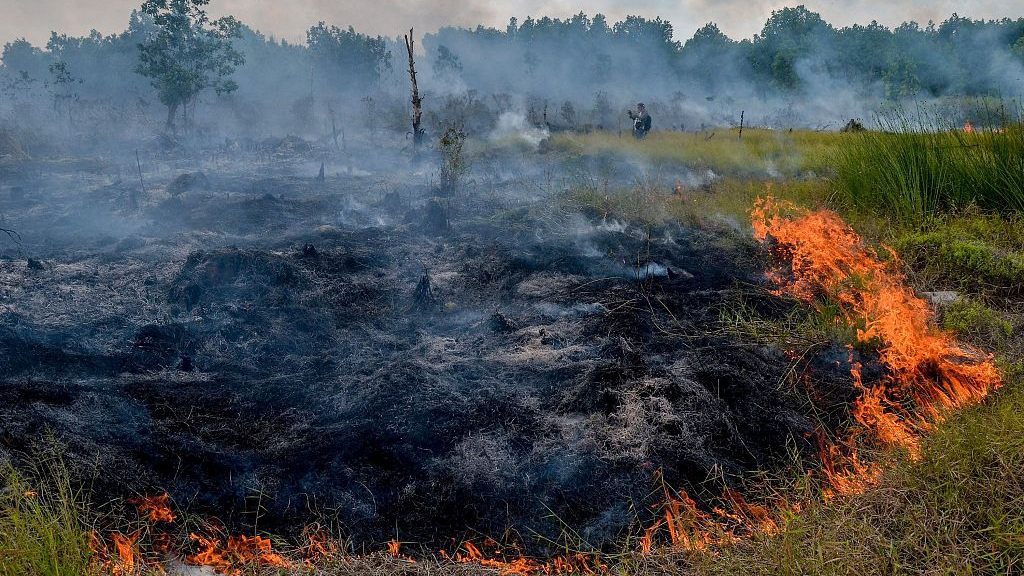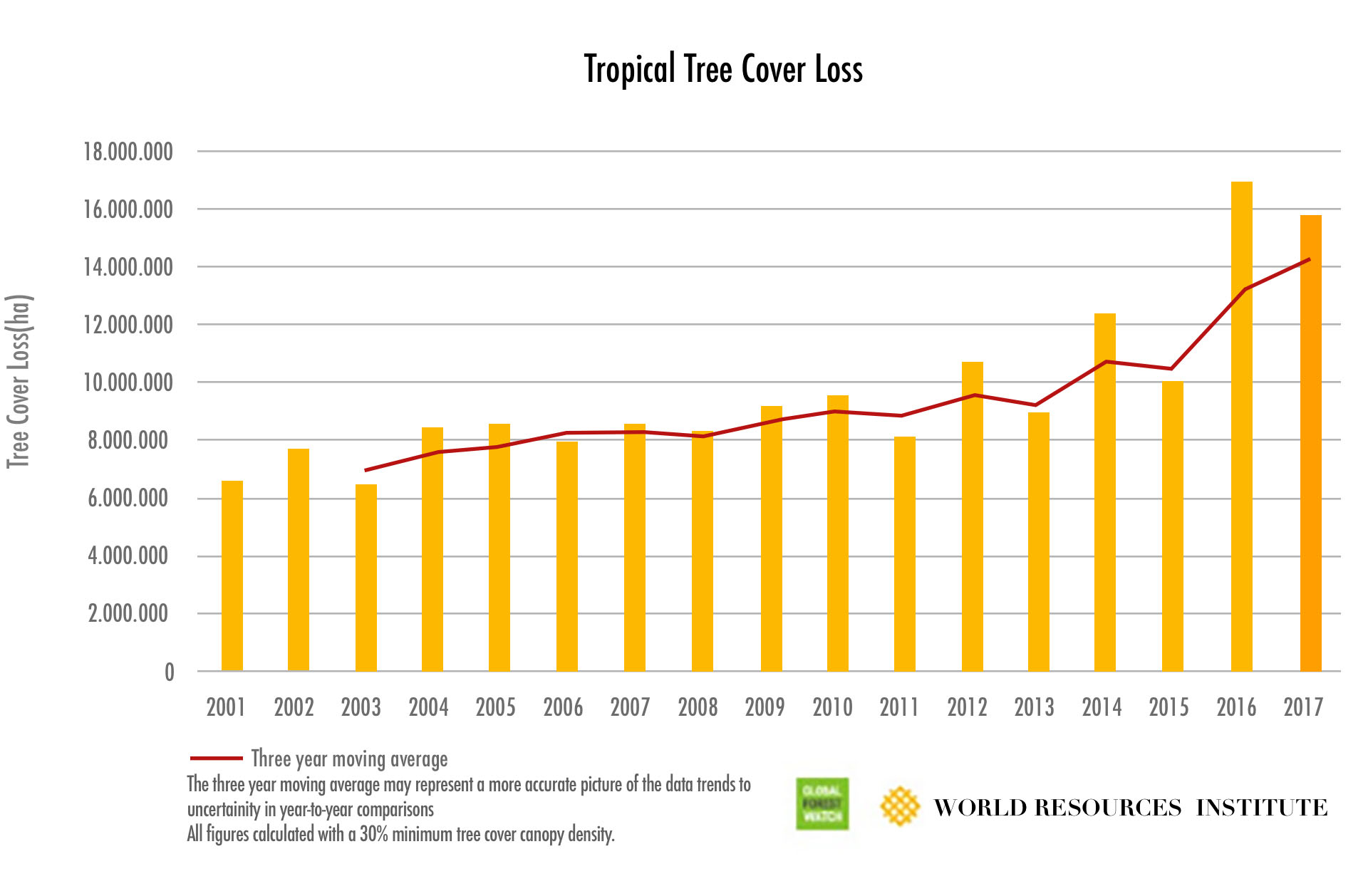
Environment
17:06, 25-Jan-2019
Increase in carbon pricing could revive SE Asia's tropical forests: study
Alok Gupta

An increase in carbon pricing by nearly five-fold can combat climate change effects in Southeast Asia, along with massively boosting the profitability of tropical forest reforestation, according to findings released today by international think tank Atlantic Council.
At present, sustainable timber production in the region yields a profit of 4,450 U.S dollars per hectare. Monoculture plantations like palm oil or rubber – known for causing severe environmental damage – generates a much higher profit of 11,400 U.S. dollars per hectare, researchers calculated.
“It's easy to conclude that monoculture plantation such as palm oil has a much higher profit. However, the financial sector is unable to put a cost to unseen benefits of sustainable forestry,” Prajwal Baral, lead author of the study told CGTN.
Though immediate profits are lower, the financial sector has yet to calculate the price of the long-term impact of afforestation, reforestation, and restoration (ARR) projects, including water conservation, bio-diversity rejuvenation, and clean air, he added.
A large number of Southeast Asian countries, particularly Malaysia, Vietnam, and Indonesia are already facing the worst environmental damage due to palm and rubber plantations. Forest clearing and crop stubble burning for monoculture agriculture, have wiped out wildlife populations causing severe air and water pollution in the region.
The devastating costs of such plantations are never factored in, researchers said. Smog caused by land clearing for palm oil blanketed most parts of Indonesia in 2015 leading to a loss of 45 billion U.S. dollars.
Worst enough, in recent years, due to poor returns from sustainable plantation efforts, governments and policymakers are focusing more on reducing deforestation rather than reviving the depleted forest cover. Because of these policy gaps, between 1990 and 2010, forest cover in Southeast Asia declined from 268 to 236.3 million hectares, accounting for about a quarter of all deforestation in the last half-century, which is equivalent to an area roughly the size of Italy.
If the current trend continues, forest area in Southeast Asia will fall from 49 percent in 2010 to 46 percent in 2020, an area just slightly smaller than Cambodia would be lost, the U.S. Food and Agriculture Organization (FAO) projection warned.

Policy gaps and unsustainable forestry practices are depleting forest cover at an alarming rate. /WRI Graph
Policy gaps and unsustainable forestry practices are depleting forest cover at an alarming rate. /WRI Graph
The large scale deforestation, according to the study, has provided more than 67 million hectares of lands for restoration projects providing an investment opportunity of 330 billion U.S. dollars.
Reforestation efforts to revive the depleting Southeast Asia's tropical forest cover can be a profitable venture if intangible benefits such as water conservation and bio-diversity are measured in terms of capital, researchers said.
In order to ensure that reforestation and restoration projects can compete with that of monoculture plantations, carbon pricing should be increased from the present eight U.S. dollars to 40 U.S dollars per ton of carbon dioxide equivalent (tCO2e), the study suggested.
A thick forest cover absorbs heat-trapping carbon dioxide is yet to reap the benefits of the carbon trade. With more than 100 countries trying to use carbon pricing to meet the climate target set under the Paris Agreement, “allowing forest carbon credits would significantly revive the depleting tropical forest cover in the region,” Baral added.
(Top Image: Indonesia faces severe air pollution every year caused by fires set in the forest and on carbon-rich peatland to clear land for palm oil and pulpwood plantations. /VCG Photo)

SITEMAP
Copyright © 2018 CGTN. Beijing ICP prepared NO.16065310-3
Copyright © 2018 CGTN. Beijing ICP prepared NO.16065310-3